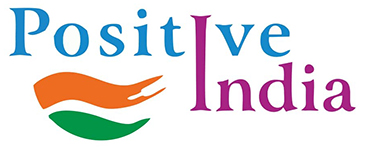
Modi Govt Refutes Claim By The Hindu On Jal Shakti Abhiyan
Factually incorrect assessment of the Jal Shakti Abhiyan published in The Hindu.

Positive India:New Delhi:
Modi Govt Refutes Claim By The Hindu On Jal Shakti Abhiyan.
This is with reference to the article published on 13th December, 2019 titled ‘Not many lessons learnt from water planning failures’ regarding Jal Shakti Abhiyan (JSA), a people’s movement (as acknowledged by the author) in the most water stressed blocks of India to improve their overall water availability by effectively utilising the opportunity offered by the monsoon season. The article contains several factual inaccuracies that require clarification to get a proper perspective on the JSA which was carried out in identified districts for four months from July to November involving all States in two phases.
The article asserts that the JSA is modelled and driven by sporadic success stories achieved through NGO experiments instead of reference to watershed management and groundwater prospect maps. However, the author seems unaware of the fact that Integrated Watershed Management Programme is one of the key programmes identified for convergence under JSA, and the claim that the JSA interventions are not scientific is factually incorrect.
The article expresses that the selection of geographies for the JSA was non-scientific, and instead based purely on administrative district boundaries. This is also factually incorrect. The selection of districts and blocks under JSA was based on the Central Ground Water Report ‘National Compilation on Dynamic Ground Water Resources of India, 2017’ which is the latest data available on the status of groundwater in India. The report identifies India’s districts and blocks that are over-exploited or critical, and these were taken up under the JSA. The level of planning and preparation for this very important initiative is that a senior officer of the Government of India of the level of Additional Secretary or Joint Secretary, representing all Ministries and Departments of GoI, worked with the district officers, and these senior officers were duly aided with technical inputs from experts of the Central Ground Water Board, Ministry of Jal Shakti, Central Water Commission (in which the author himself is a Director), Central Soil and Materials Research Station, Central Water and Power Research Station, National Institute of Hydrology and the office of the Principal Scientific Advisor.
The article makes a strange claim that the recharge of groundwater may come at the cost of surface water and vice-versa. The author seems unaware that the JSA aimed at both recharge of groundwater aquifers as well as rejuvenation and augmentation of surface water conservation structures like tanks, ponds, lakes, traditional water bodies, etc. It is surprising that the author, being a technical officer himself, does not seem to be aware of the fact that the base flow in the rivers is contributed primarily by the groundwater, and that both surface and groundwater are part of the same hydrologic cycle.
The article also raises baseless doubts about the quality of the structures constructed under the JSA. He seems unaware of the fact that each of these structures are to adhere to the standards as per the individual programme guidelines issued by the respective Ministries/ Departments/ State implementing agencies, all of which are based on scientific construction norms.
Contrary to what the article mentions, the JSA actually has a very robust impact monitoring mechanism. Four specific outcome parameters have been identified and States will be measuring them periodically over the next few years. These are (i) Increase in groundwater level; (ii) Increase in surface water storage capacity; (iii) Increase in the soil moisture in the farm land; and (iv) Increase in area covered with plantation and number of samplings planted. Each officer who visited the district identified and geo-tagged specific structures under each of the five intervention areas for measuring the outcomes of the program. The data received from them is currently being analysed by a team led by the Principal Scientific Advisor.
And finally, the article speaks of the JSA being only a rural phenomenon, and not focusing enough on farmers education for less water intensive crops. Both of these claims are factually incorrect. First, Urban districts were also a part of the JSA, monitored by the M/o Housing and Urban Affairs. And second, farmers education was a significant part of the JSA with thousands of Krishi Vigyan Kendra Melas having being organized across the country, focusing majorly on moving to less water intensive crops. These were very well received by the farming community and were one of the major successes of the program.
The JSA has successfully raised the level of awareness of water conservation for all stakeholders, and the momentum generated needs to be sustained for the long term benefit. Articles like the one in question baselessly undermine the tremendous effort of lakhs of people involved in taking this first major step towards making water conservation a jan andolan.


